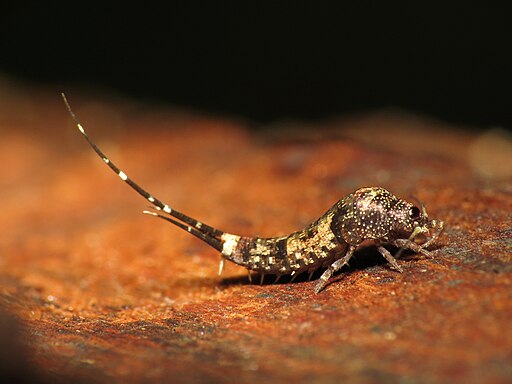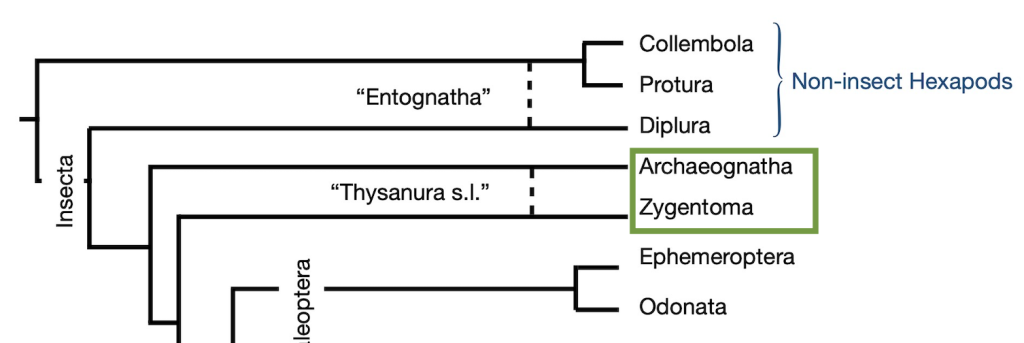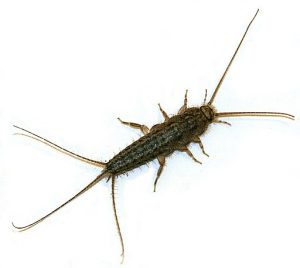14 The Orders of Insects: Archaeognatha and Zygentoma


Order Archaeognatha
Order Archaeognatha
- common name: jumping bristletails
- a primitive order whose members were once assigned to the Thysanura.
- scientific name (archaeo = old; gnatha = jaw) refers to primitive condition of mandible articulation
- feed on algae, moss, lichens and detritus
- found in damp environments under bark, stones, crevices, leaf litter.
- typically nocturnal
- fast and able to jump by flexing their abdomens
- No direct mating; transfer of sperm is indirect, stalked spermatophore in Aust. spp.
- moulting continues after adult ecdysis: long lived: 2-4 years
Characteristics of Archaeognatha
Adults
- elongate, laterally compressed body; moderate size 6-25mm; body covered in pigmented scales
- large, contiguous compound eyes and three ocelli; mouthparts hypognathous (directed downwards) with monocondylar (single-articulated) mandibles; antennae segmented
- thorax strongly arched; wingless
- some abdominal segments have paired styles and vesicles
- abdomen has three “tails”: a pair of short cerci with a longer, single median caudal appendage
Immatures
- Resemble a small adult
Order Zygentoma (Thysanura)
Order Zygentoma
- common names: silverfish or firebrats
- named silverfish because as insects move quickly, scales of body shimmer like a silver fish.
- firebrats are the ones that prefer warmer places 32-44°C.
- Greek (thysanos = fringe, oura = tail)
- worldwide distribution; nearly 400 species
- mainly omnivorous or herbivorous; can digest cellulose
- domestic species of silverfish feed predominantly on dry paper products, book bindings, wallpaper, household debris
- found in soil, leaf litter, under bark, dark place; nocturnal
- an unusual trait: some silverfish moult after sexual maturity, which is attained between 10th and 14th in-star

Characteristics of Zygentoma
Adults
- Elongate, flattened body covered in silvery scales; 5-30mm long
- mouthparts hypognathous or prognathous (directed downwards or forwards); eyes are absent or greatly reduced; antennae slender, filiform
- wingless
- some abdominal segments have ventral styles; abdomen has three “tails”: two paired cerci and a slightly longer median caudal appendage.
- Metamorphosis simple: ametabolous; long lived: 2-3 years
Immatures
- Resemble small adults
Topic Review
Do you know…?
- the two orders of primitively wingless insects?
- special features of each order

